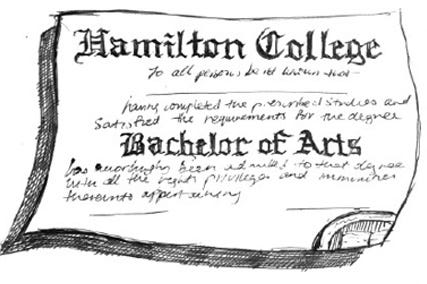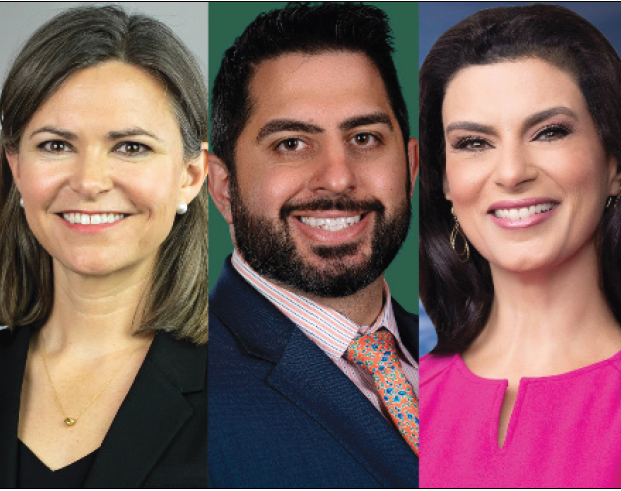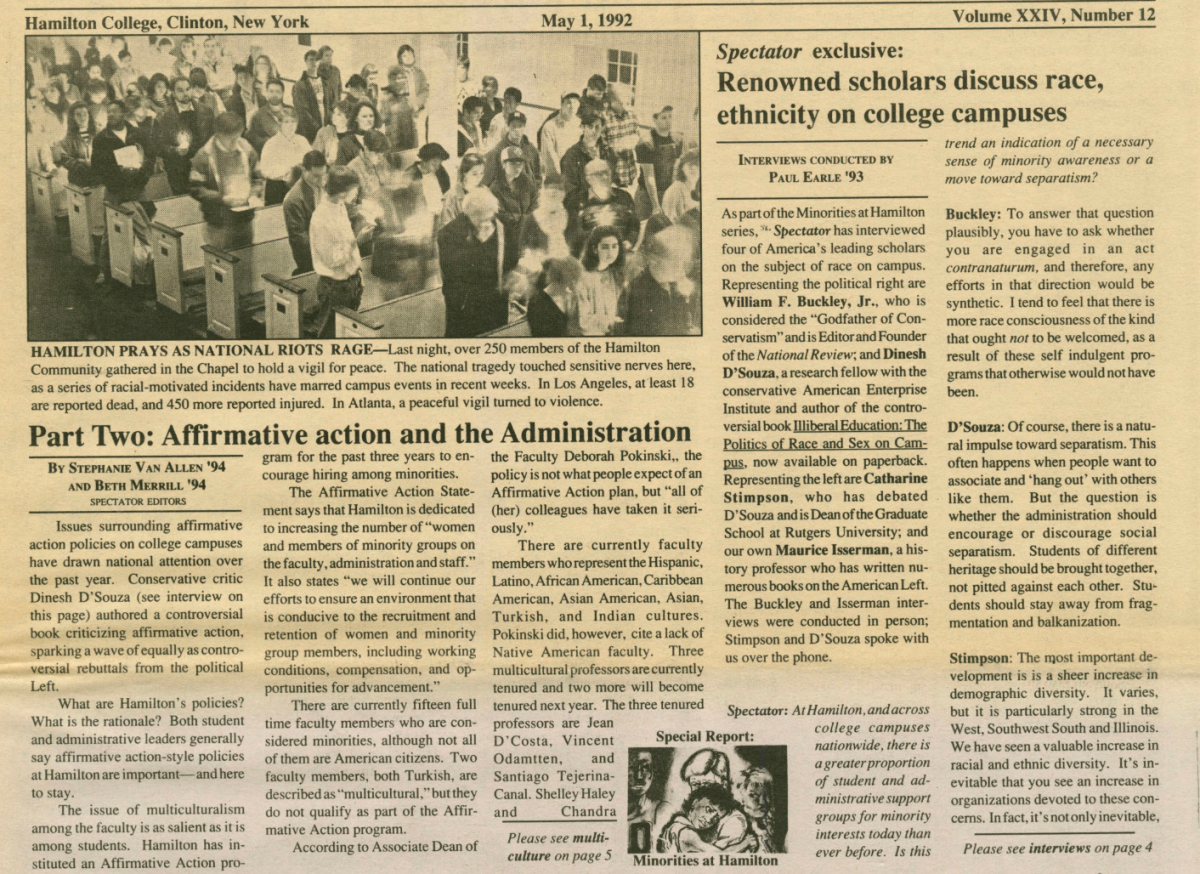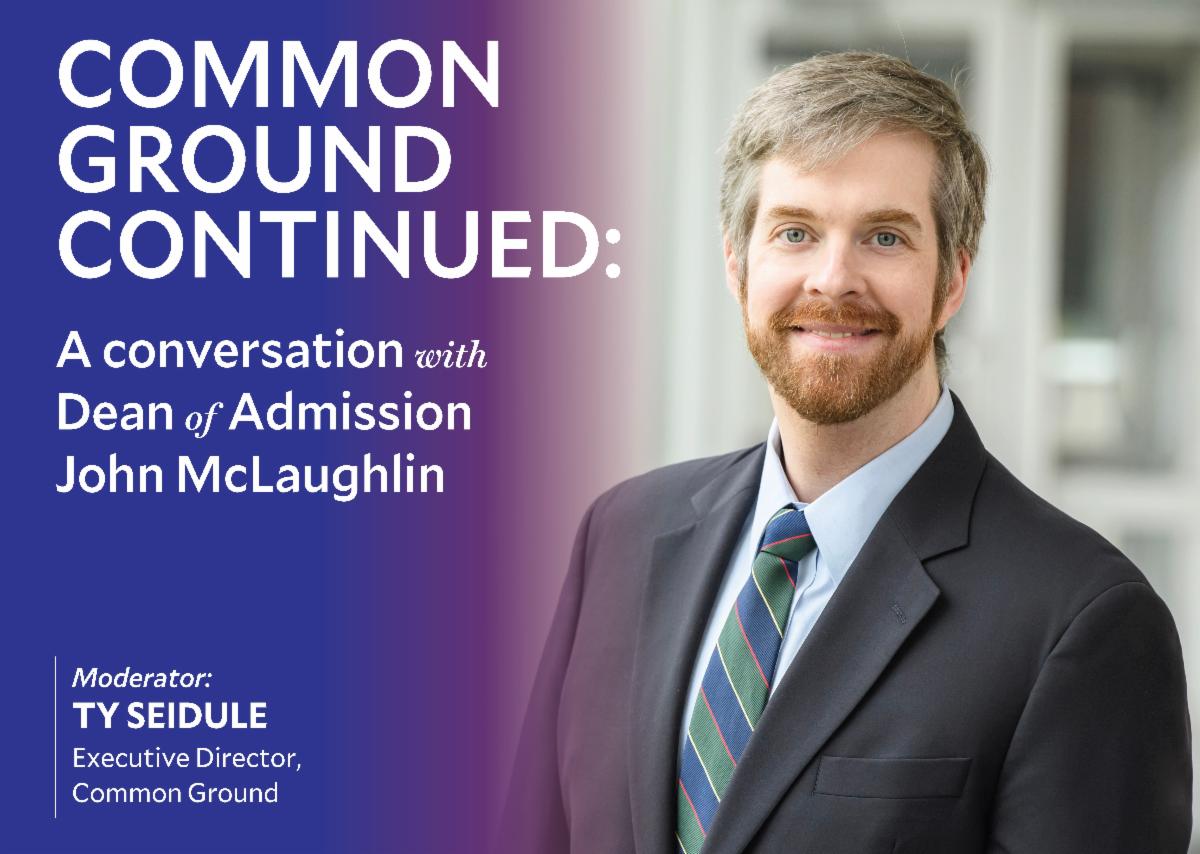
This semester, I will be taking a Film Studies course and Creative Writing course, which lead my father to ask me: “What the hell are we paying $60,000 a year for?”
He has a fair point. Unless I turn into the next Stephen King or Edgar Wright, the chances of my dad receiving a return on his investment are slim. How am I supposed to put my parents in a nursing home if I am living on a mattress on the floor in a one-room apartment? And while I chose these classes myself because they interest me, their usefulness in an increasingly competitive job market is questionable at best.
So, do I sacrifice my soul at the altar of Economics and concede to a life bereft of creative outlets? Alas, that course of action is not an option for me, not because of any moral high ground, but because of the glaring C+ on my transcript from Econ 101.
My own struggle to reconcile intellectual fulfillment with employability represents the push and pull of a liberal arts education. In a time where skilled trades are becoming more and more lucrative and dependable, and liberally educated graduates are flooding the market, it begs the question: What is the point of a liberal arts education?
When applying to Hamilton, each student receives a litany of emails and letters advocating for the liberal arts experience. While this correspondence is basically just a glorified version of spam, surprisingly the content is not entirely marketed rhetoric.
According to the Association of American Colleges and Universities, four out of five employers surveyed wanted all of their employees to study the liberal arts and sciences. Moreover, the Association of American Colleges & Universities (AACU) states that the data collected on the employment and earnings of liberal arts graduates “provides a much-needed corrective to claims that most liberal arts graduates — those with a degree in a humanities, arts, or social science eld — are unemployed and unemployable.”
So while the perception of a liberal arts education is one of sardonic derision, the reality is that the courses we take are not important. Rather, the skills we learn through working with course materials are what we pay exorbitant tuition fees for.
Think of it as doing geometry in high school math: for most of us, we will never have to find the hypotenuse of a right triangle in our day-to-day lives. But the logical processing and problem-solving skills needed to employ Pythagoras’ theorem are universally applicable. It is on this triangular model that the liberal arts education is built.
Will I use everything I learn in my creative writing course in my job someday? Probably not. Will my lm studies course hold any weight on an application? Again, chances are slim. But what employers see when they receive an application that says “Hamilton College” is a person who may have taken irrelevant or self-indulgent courses, but still has the broad skills to tackle a wide array of problems.
That is what is valuable about a liberal arts education: learning how to think, then one day applying those skills to a more specific end in the workforce.

















